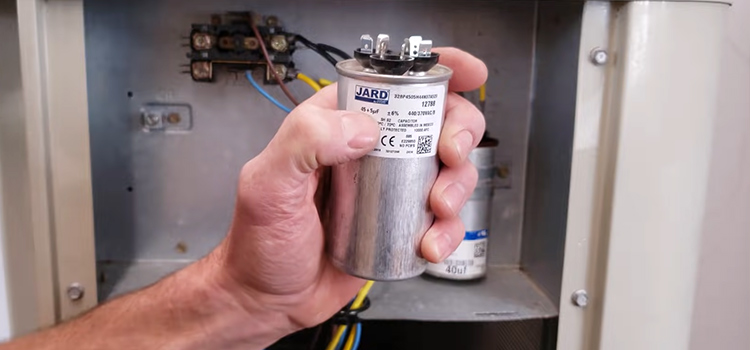Can I Replace a Capacitor With a Higher µF? | Is It Possible to Do?
In some cases, a capacitor can be replaced with a higher µF. It depends on the function of the capacitor in the circuit. It is critical to first determine the function of the capacitor in the circuit to know if it can be replaced.
For example, a smoothing capacitor of a power supply can be safely replaced by a higher µF one, because in this case, the capacitor acts only as a storage device of charge. But a filter capacitor cannot be replaced by a higher or lower value because it will change the frequency response of the circuit.

How Can I Replace a Capacitor With a Higher µF?
Whether a capacitor can or cannot be replaced by a higher µF depends entirely upon the function of the capacitor in the circuit. The function of a capacitor in a circuit can be divided into two classes roughly. If the capacitor is used just as a charge storage device or if its capacitance affects the circuit.
Replacing a capacitor with a higher microfarad (µF) rating can be done in some cases, but it’s important to do so with caution and consideration. Here are the steps to replace a capacitor with a higher µF rating:
Step #1: Check Compatibility
Before replacing the capacitor, ensure that the higher µF rating is compatible with the electrical circuit and the device in which it is used. Capacitors are used for various purposes, including motor start/run, power factor correction, and more. Changing the capacitance value can affect the device’s operation, so it’s essential to verify compatibility.
Step #2: Turn Off Power
Always disconnect the power supply to the device or circuit before working on it. This is crucial for safety.
Step #3: Select the New Capacitor
Choose a capacitor with the desired higher µF rating. Make sure it has the same voltage (or higher) as the original capacitor. You should also consider the physical size of the new capacitor to ensure it fits in the available space.
Step #4: Discharge the Old Capacitor
To discharge the old capacitor, use a resistor with a high resistance value (e.g., 10k ohms) connected to the terminals of the capacitor. This is a safety step to prevent electrical shock.
Step #5: Remove the Old Capacitor
Carefully disconnect the old capacitor from the circuit, noting the wire connections and polarity (if applicable).
Step #6: Install the New Capacitor
Connect the new capacitor in place of the old one. Ensure that the wire connections match the original connections, and the polarity (if applicable) is observed.
Step #7: Test the Device
After replacing the capacitor, turn on the power and test the device to ensure it functions as expected with the higher µF capacitor. Be prepared to disconnect the power if any issues arise.
It’s important to note that replacing a capacitor with a higher µF rating should only be done when you fully understand the electrical circuit and the impact of the capacitance change. In some cases, such as with motor start capacitors, a small variation in µF might be acceptable and improve performance, but in other applications, it could lead to problems.
Can I Replace the Capacitor With a Higher µF in a Power Supply?
Yes, the smoothing capacitors of a power supply can be replaced by a higher µF capacitor. The smoothing capacitors smooth out the output voltage waveform of a power supply. The power supply’s output may be stabilized even more by replacing the capacitor with a higher µF one.
What Happens if You Put a Bigger Capacitor?
For circuits that are not affected by the capacitance, changing the value doesn’t do anything, the circuit acts normally. But for circuits such as filter networks or audio amplifiers changing the capacitance changes the frequency response of the circuit. Thus, the circuit’s output deviates from the designed output.
Can I Replace a Capacitor With a Higher µF in the Amplifier?
Yes, it can be replaced. In audio amplifiers, the capacitor acts as a DC blocker and will make an RC high pass filter circuit with the speaker’s impedance. Increasing the capacitance will lower the cutoff frequency of the filter. So, replacing the capacitor with a larger µF will increase the bandwidth of the amplifier.
Can a capacitor be replaced with the same µF but a higher voltage one?
Yes, a capacitor with a higher voltage rating can replace a lower voltage capacitor of the same capacitance. A higher voltage capacitor simply means that it can be charged up to a higher voltage level. So, using it won’t change the performance of the circuit.
Conclusion
Based on the function of the capacitor in the circuit, it may or may not be replaced with a higher µF capacitor. To know if a capacitor could be replaced with a higher µF one. The circuit should be analyzed and the function of the capacitor be determined.
Subscribe to our newsletter
& plug into
the world of circuits